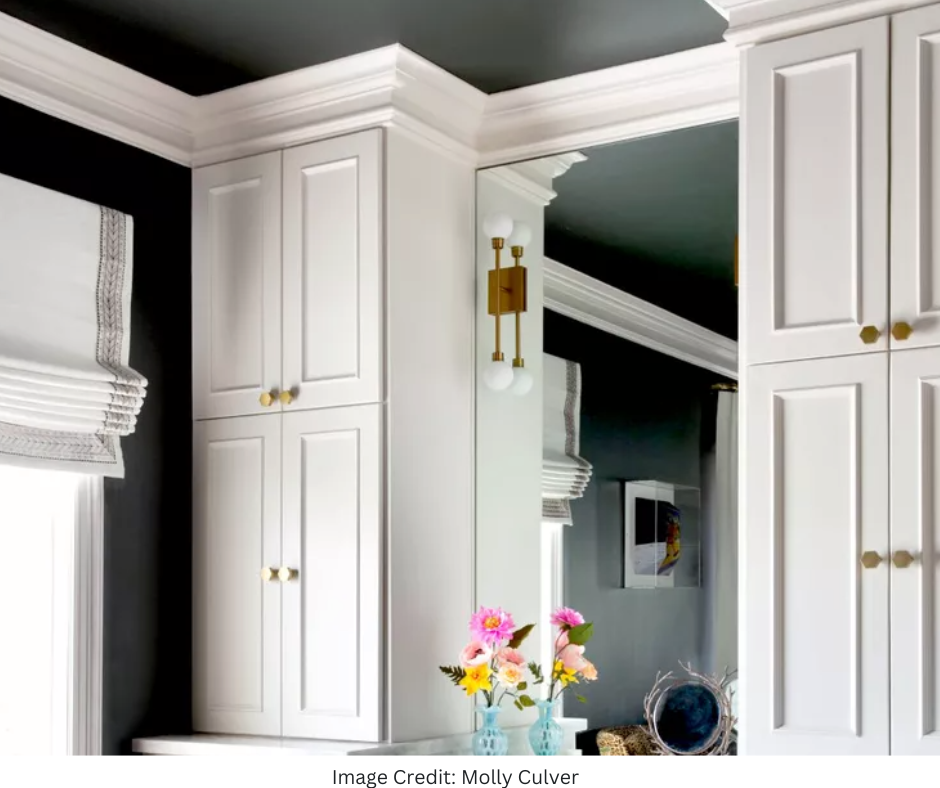Choosing the right color for your ceiling is as crucial as selecting the right shade for your walls. Traditionally, ceilings are often painted in white or lighter shades to create an illusion of space and height. However, the right color on the ceiling can enhance the overall aesthetic of a room, adding character and depth.
Pros and Cons of Matching Ceiling Color with Wall Color
Painting your entire ceiling the same color as your walls can create a streamlined, monochromatic look. This option can be ideal for smaller rooms to give an illusion of more space. However, this approach might not be suitable for larger rooms as it can make the space feel overwhelming and enclosing.
Opting for white ceiling paint is often considered a safe choice, and understandably so. White ceilings help bounce off natural light, creating a bright and airy atmosphere while helping smaller spaces appear larger. This traditional color choice is versatile and matches with virtually any wall color, eliminating the stress of color coordination. However, while white ceilings are universally appealing, they may lack the personal touch and uniqueness that colored ceilings can provide. Selecting a colored ceiling paint allows for creative expression and the potential to dramatically transform the space, adding depth, mood, and personality. Therefore, while white is a safe and universally appealing choice, exploring colored options can lead to a more personalized and visually interesting space.
Spicing up a Room with Ceiling Color
If you are looking to add a touch of creativity and personality to a room, consider experimenting with different colors on the ceiling. A bold color choice can make a dramatic statement, while a soft pastel shade can add a subtle layer of interest to your décor. Keep in mind that darker colors can create a cozy, intimate feel but might make the room appear smaller. In contrast, lighter shades can open up the space and make it feel larger.
Considering medium paint tones for a ceiling can effectively bridge the gap between the extremes of light and dark colors. Medium tones, such as greys, blues, or earthy hues, can bring a sense of balance and harmony to a room. They share the light-enhancing qualities of lighter colors, helping to open up the space while also adding more character and depth than a standard white ceiling. Unlike darker shades, medium tones won’t make a room feel smaller, but they still provide a hint of coziness and intimacy. They can work harmoniously with a variety of wall colors, making them a versatile choice for those desiring a touch of color on the ceiling without dramatically altering the room’s overall feel.
Sky blue is an excellent choice for a ceiling color that can dramatically transform the ambiance of a room. This hue’s ability to mimic the sky creates a serene, calming atmosphere that can help in spaces designed for relaxation or contemplation, like bedrooms or home offices. In addition to its soothing properties, a sky-blue ceiling can uplift a room’s aesthetic, introducing a splash of color without becoming overpowering. Furthermore, it pairs well with a wide range of wall colors, from soft neutrals to more vibrant tones, offering flexibility in design. A sky-blue ceiling can add depth, interest, and a touch of the outdoors to your interior, making it a color worth considering in your painting project.
Choosing the right combination of wall and ceiling paint colors can drastically impact the look and feel of any room, setting the tone for the overall aesthetic and ambiance. The wall paint is often the dominant color, setting the scene for your furniture and accessories. It’s essential to select a tone that complements your interior décor and aligns with your style. Meanwhile, the ceiling paint color is the overhead visual that can subtly or dramatically alter the room’s perceived size, height, and brightness. A well-chosen ceiling color can enhance the wall color, create an interesting contrast, or add an unexpected pop of color. By considering both wall and ceiling paint colors in tandem, you can create a harmonious, aesthetically pleasing environment that perfectly suits your taste and the desired mood for the room.
The options for painting your textured ceilings a lighter color are endless, providing a refreshing alternative to the standard ceiling white used by builders; you can explore a spectrum of light hues to subtly enhance the aesthetic of your room and complement your wall colors.
Accentuating Crown Molding with Ceiling Colors
When it comes to accenting crown molding, the color of the ceiling plays a significant role. Choosing a contrasting color for your ceiling can highlight the architectural features of the room. On the other hand, a complementary color can create a seamless transition from the walls to the ceiling.
Conclusion
In conclusion, the choice of a ceiling color depends on individual preference, the size and lighting of the room, and the desired ambiance. A well-chosen ceiling color can significantly enhance your home’s appeal, making it a worthwhile consideration in your interior painting project.
Explore the transformative power of color in interior spaces with our in-depth guide on ceiling painting. Learn about the pros and cons of matching your ceiling color with your wall color, discover how to spice up a room with a bold ceiling color, and uncover the secrets to accentuating crown molding with strategic color choices. Unleash your creativity and make your home truly yours with these expert interior painting tips.


